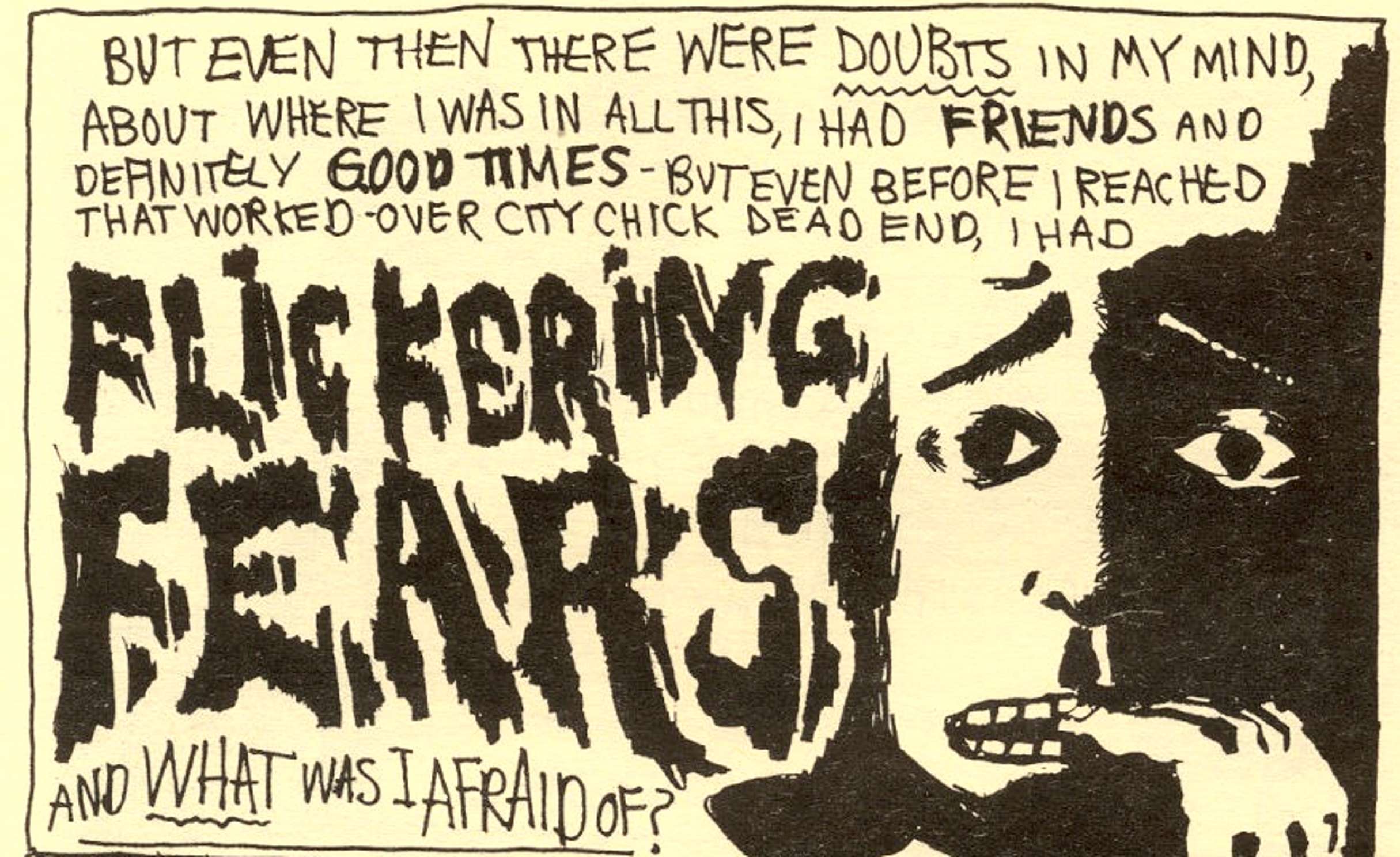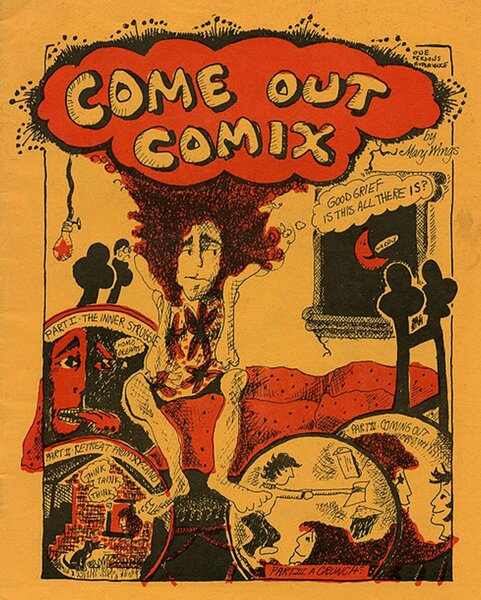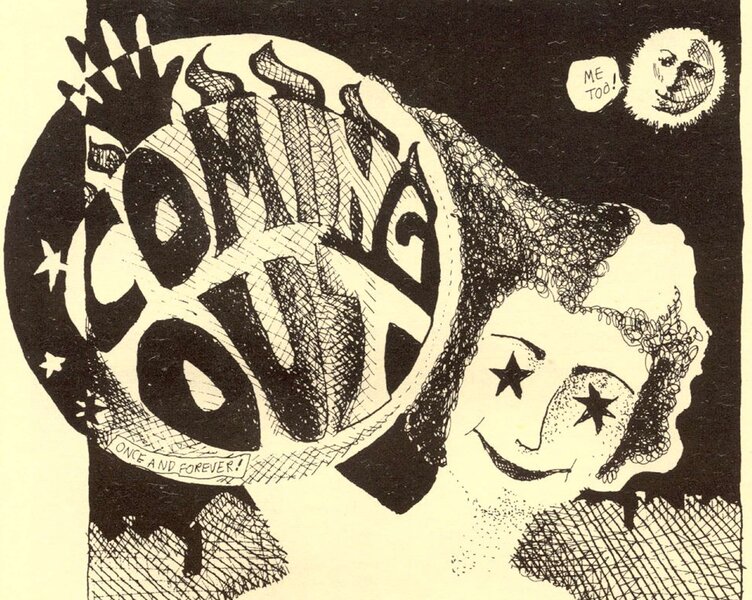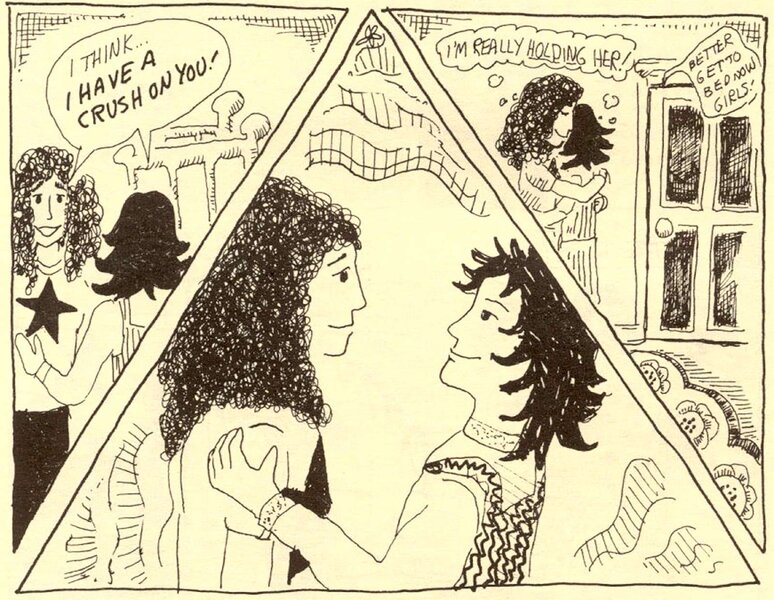Pride-ographies: Mary Wings

The Underground Comix era began in the late '60s in response to the heavy censorship of the medium due to the presence of the Comics Code Authority. People wanted to make books that looked like their lives, and so, as we had the indie explosion in cinema, so did comics see their own groundbreaking era of creativity. Some of these comix aged well, most of them haven't, but all of them existed in the spirit of disrupting the status quo of the medium.
When discussing an era of experimental and groundbreaking autobiographical works in the comix scene, queer comix by queer creators so often fall by the wayside. While many artists of this time period went on to have illustrious careers, queer creators get nary more than a footnote. In the hopes of changing the conversation for the better, we bring you Pride-ographies, a series of deep dives into queer comix history.
Born in 1949, Mary Wings came of age in a time when the hippie movement was fading into the cynicism of the late '70s, when a burgeoning queer scene was emerging in the Bay Area, and when underground comix were truly taking off. She grew up in a household in which her mother, who had harbored dreams of becoming an artist, instead spent her life serving her husband and son. When Wings was in her 20s, her mother was diagnosed with cancer and passed away less than three weeks later. Wings felt compelled by forces unseen to live up to all the dreams her mother could not pursue due to the oppressive ideas of what women were supposed to be in the 1950s and '60s. She moved to the Bay Area and went through a series of unsatisfying boyfriends before finally discovering the wild world of lesbianism.
Trina Robbins made the first lesbian-focused comic story in the U.S. that was not erotic nor intended for a straight male audience: "Sandy Comes Out," which appeared in the seminal Wimmen's Comix #1. Robbins had helped to create the first all-female comics anthology with It Ain't Me Babe, and Wimmen's Comix would help further solidify the presence of woman creators in what is generally regarded as an extremely misogynistic era of the underground comics scene.
Based around the experiences of R. Crumb's sister Sandy, who helped Trina create the story, "Sandy Comes Out" follows its main character through her journey from divorcee to member of a hippie commune, but it's only three pages long. Besides, it posits lesbianism as a reaction to an oppressive structure, thereby communicating an almost fully intellectualized version of coming out. This story is fun and important but is without the emotional resonance that would come from queer creators telling their own stories.
This is no doubt a monumental comic for any number of reasons, and its influence was profound. Very soon after Wimmen's Comix #1's release in 1972, Mary Wings made the first U.S.-released lesbian comic, in part out of frustration that the first lesbian comic story had been written by a straight woman who had given her the impression of relative flippancy. In just one week, Wings created and self-published one of the most important stories of the early Comix movement, Come Out Comix.
Come Out Comix is a one-shot that's widely considered to be the first comic that was explicitly written by a lesbian for other lesbians to read, with no straight audience in mind whatsoever. Released in 1973, the story revolves around Mary's personal coming out and how it manifested as a quest of self-discovery rather than being a whimsical trot through subcultures for a bored middle-class woman (as was generally portrayed in media of the time). Wings walks us through not just her own experience, but the way her old friends fail to respond to her heartfelt letters in which she came out to them. Taking us back to a time when coming out for some meant writing dozens of letters to family and friends, Come Out Comix is indispensable as a time capsule as well as a heartfelt personal story of queerness in a way that, at the time, had not ever been explored within the medium.
Mary Wings' comics work is sparse, but her output remains meaningful in its honesty. Her next comic, Dyke Shorts, followed much the same theme as Come Out, while Are Your Highs Getting You Down? was funded by the California Arts Council to take on the issue of drug addiction. Her work appeared in the first two issues of Howard Cruse's Gay Comix. Though there was a risk of her dreams of becoming a teacher being squashed by her status as a counterculture lesbian comix creator in the late '70s due to the Briggs Initiative, Wings continued to push the envelope by doing things like drawing Sappho dressed as the "WE WANT YOU!" Uncle Sam. The Briggs Initiative was intended to prevent openly gay teachers from working with children via the assumption that they were attempting to "recruit" young people to a gay lifestyle. Even just this one pithy illustration was a brave and scathing tongue-in-cheek response to homophobia.
Besides her comix, Wings also helped to pioneer the lesbian detective subgenre with the Emma Victor mystery series. As with Wings' comics work, this series is currently out of print, so copies have to be hunted down or found online. At last check-in she was working on a comic called Old, hoping to address the topic of aging, a mostly taboo and certainly under-explored subject in any media but especially in the world of comics.
Mary Wings might not have made a ton of comics, but the ones she did remain incredibly important well over four decades later. While the rough art of Come Out Comix was often criticized, Wings' art is actually quite good, and it had enough ideas in the linework to keep it afloat. What stands out the most about it is how well it has aged. There's an openness to it that is rare to find even today, and regardless of anything, it remains an underrated classic of LGBTQ+ comics, underground or not.































